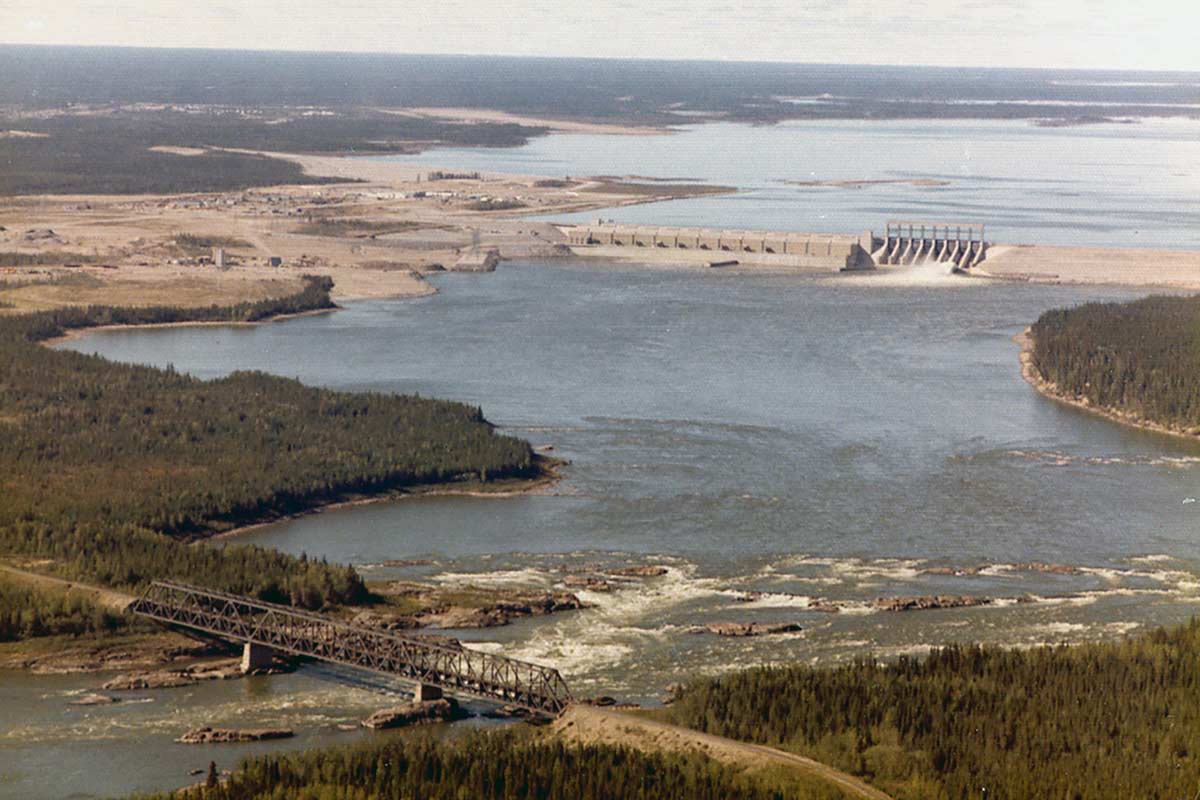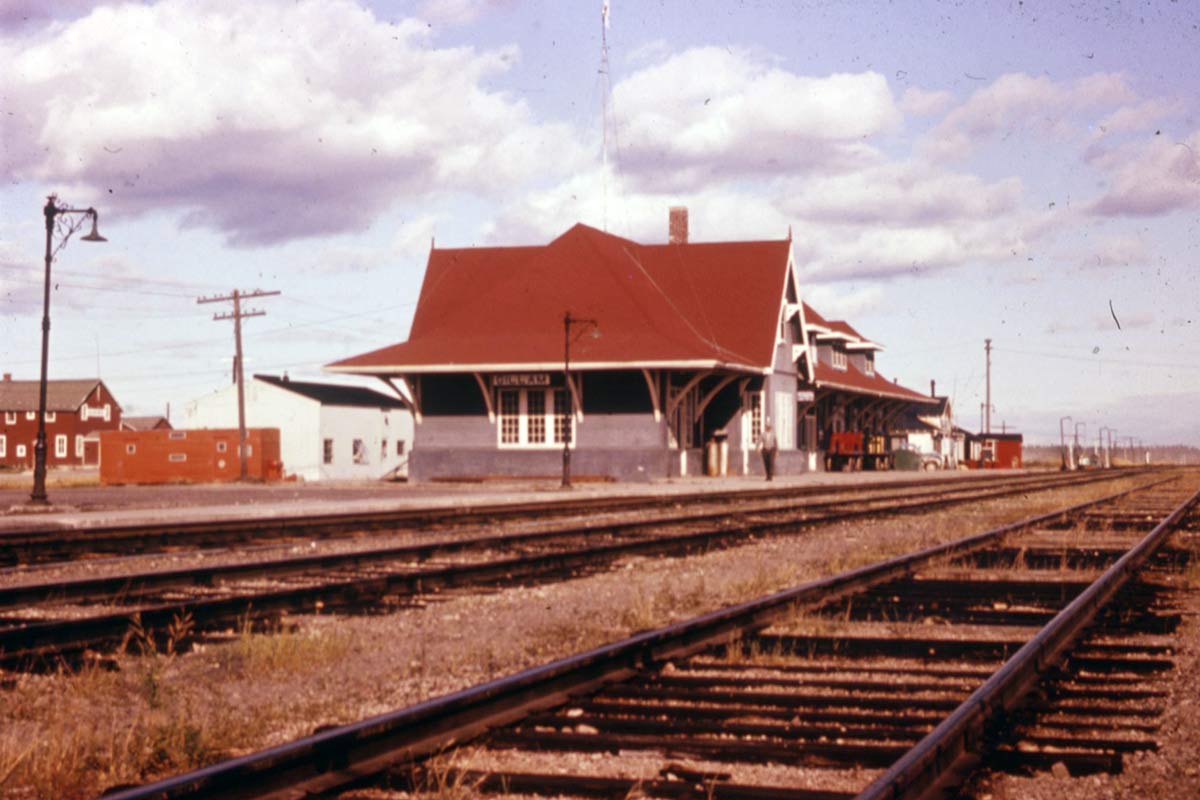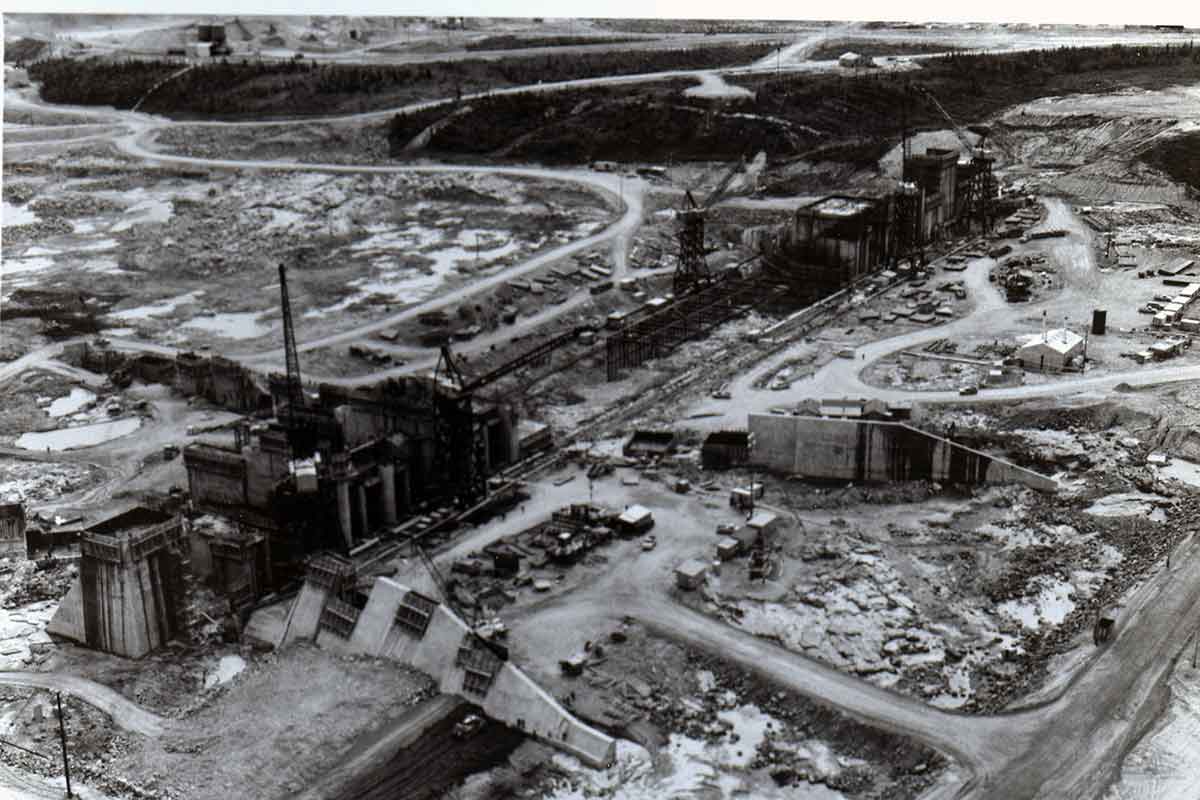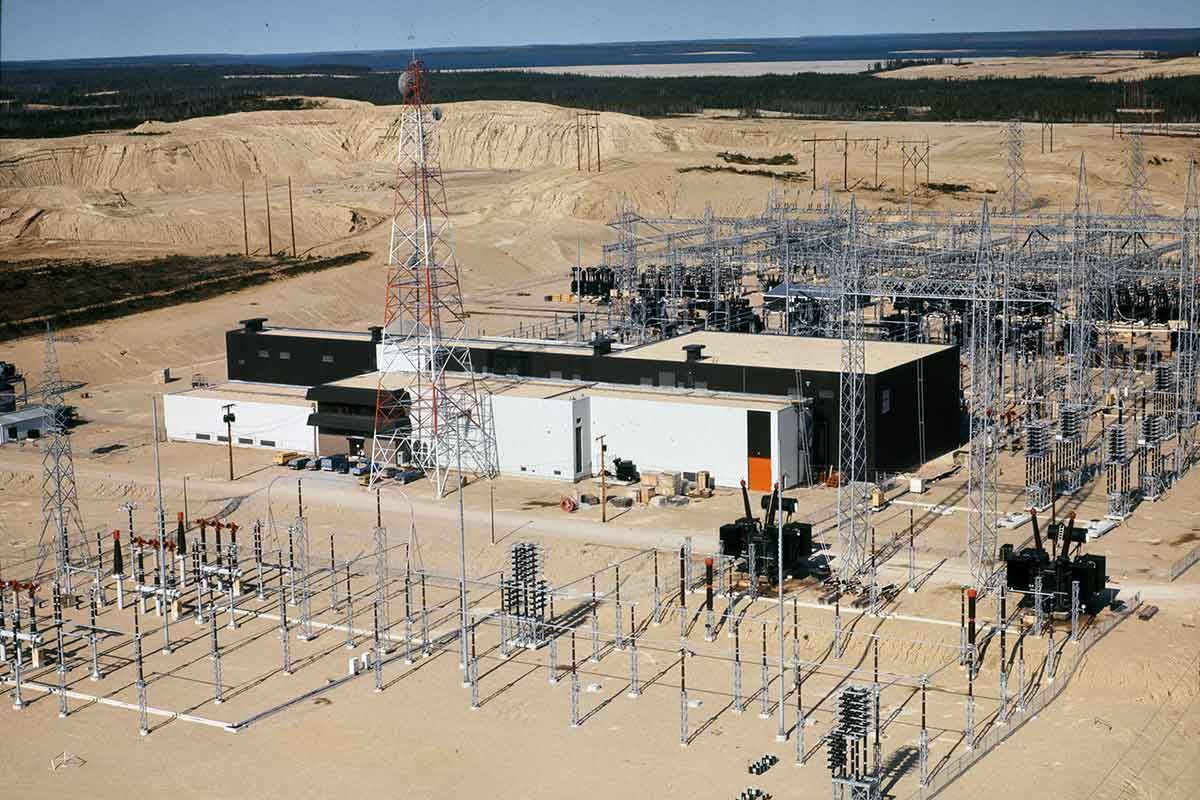50 years of dependable power from the Nelson River

Aerial view of Kettle Generating Station and the Canadian National Railway bridge.
As a primarily hydroelectric utility, Manitoba Hydro has a long history of providing safe, clean, reliable hydropower to an interconnected grid of utilities. About 75 per cent of that clean, reliable hydroelectricity comes from the Nelson River, a large and powerful river — fed by a multi-province and multi-state watershed — running through the north of Manitoba and draining into Hudson’s Bay. As of 2023, it has been 50 years since Manitoba Hydro began harnessing the power of the mighty Nelson.
Brian Martin was three years out of high school when he found himself at the ground floor of Manitoba Hydro’s hydroelectric development of the Nelson River. At 81 years old, Martin — still in the town of Gillam, where it all began — attended a celebration of the 50th anniversary of Nelson River Hydroelectric Development this year.
“I’m proud of the work I did,” said Martin. “Manitoba Hydro was a great company to work for. I got to be outside all the time and contribute something. We also raised a family. You always felt your children were safe here.”

The Gillam train station, circa 1966.
Martin was part of a crew doing river surveys in the mid-1960s, including plotting the winter freeze and spring ice breakup and collecting soil samples. Two of his sons now also work at Manitoba Hydro.
It had been known for decades that Manitoba’s north was its energy future, and the work Martin and many others did would lead to the construction of the Kettle Generating Station and the Radisson and Dorsey Converter Stations.

The Kettle site during early construction.
By harnessing the power of the Nelson, which drains the vast Lake Winnipeg watershed into Hudson’s Bay, Manitoba could meet its own electricity needs as it headed into the 1970s — and provide neighbouring utilities clean hydropower with any excess generated.
The problem was getting all that dependable power moved south. What stumped planners was building a transmission line from the rugged terrain of northern Manitoba all the way to Winnipeg in the south of the province — a journey covering roughly 560 miles — in the most efficient way possible.
It was this problem that led, after about a decade of study, to Manitoba Hydro’s Nelson River Hydroelectric Development, which was:
- The building of Kettle Generating Station about 4 miles downstream from the town of Gillam — at the time, Manitoba Hydro’s largest generating station. Concrete was poured July 27, 1967 and the station first produced power Dec. 20, 1970.
- The development of the Bipole I transmission line in 1968 — at the time, one of the world’s longest high-voltage direct current (HVDC) transmission lines. Direct current was chosen over alternating current as it is the more efficient method of transmitting large blocks of power over long distances.
- As part of the HVDC system, the building of Radisson Converter Station (about 2 miles south of Kettle Generating Station) and the Dorsey Converter Station (northwest of Winnipeg). Dorsey, the southern end of Bipole I, received its first DC transmission from Radisson on June 17, 1972.
- Putting Gillam, Manitoba on the map — it was the hub for Manitoba Hydro’s operations. At the peak of construction in the 1960s-70s, the town swelled to 3,000 people (the most recent census places its population at 1,265 people).

Crane crew at work during Kettle Generating Station’s construction.
The project was not without controversy, even in its early planning stages in the 1960s. Myron Smolarski, Manager of Transmission Stations operations & Maintenance North, says this project changed how Manitoba Hydro works with Indigenous communities.
“For many Indigenous people, hydro-electric development in the north impacted a number of Indigenous communities,” Smolarski said. “The legacy of these past developments rightly changed our relationships with these communities and led to our more recent partnership developments, like the Wuskwatim and Keeyask generating stations, and our continuing efforts to work with Indigenous communities to address the impacts of our projects and operations.”

Radisson Converter Station, 1971.
In addition to that legacy, development on the Nelson River also put Manitoba Hydro at the forefront of clean, reliable energy. It was one of the first utilities to invest heavily in HVDC — and at the time, the Nelson River HVDC system was the highest voltage in the world. Manitoba Hydro engineers pioneered many aspects of HVDC transmission, working in conjunction with major DC equipment supplier English Electric.
“The decision 50 years ago to develop the Nelson River built a foundation that now delivers about 75 per cent of all the electricity generated in our province,” said Dave Bowen, Manitoba Hydro’s Vice-President of Operations. “And the benefit is that our renewable, reliable hydropower from the Nelson puts us at an advantage as Canada and the world looks for ways to reduce reliance on fossil fuels. The Nelson River Development Project was a huge leap — we now must think seriously about the next one in a world that’s seeking solutions to reduce GHG emissions.”
